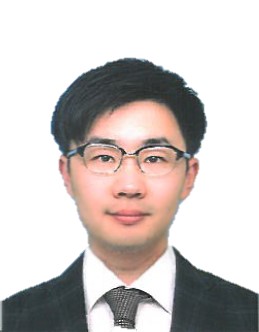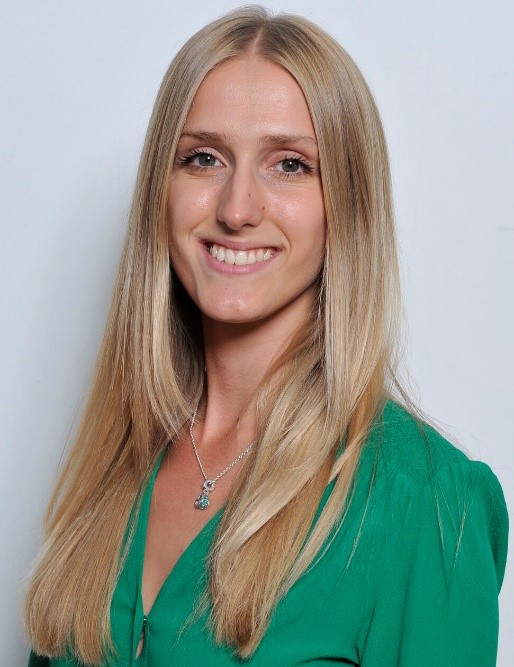Body-Centric Communication and Sensor Systems: Design Challenges
Zvonimir Šipuš, PhD
Faculty of Electrical Engineering and Computing, University of Zagreb, Croatia
One of the major challenges in the development of components for body-centric systems is to design a device that can at the same time satisfy technical requirements and fulfil non-technical requests. For example, on-body devices should be aesthetically acceptable and suitable for wearable applications, while implantable devices should be small and made of biologically acceptable materials. Various applications has led to many breakthroughs in body-centric systems focused on healthcare, fitness, civil services and entertainment. The design process usually start with analytic modelling of canonical cases, realization of proof-of-concept prototypes, and finally development of components suitable for integration into a body-centric system. The aim of this presentation is to present a simplified model of an implanted and wearable antenna that provides close-form expressions to estimate EM radiation from the implant despite being only a rough approximation. Furthermore, realization of wearable antennas using conductive fabric and thread will be discussed, demonstrating that the proposed antennas are suitable for all three (off-body, on-body, and in-body) body-centric communication scenarios.
 Zvonimir Šipuš was born in Zagreb, Croatia, in 1964. He received the B.Sc. and M.Sc. degrees in electrical engineering from the University of Zagreb, Croatia, in 1988 and 1991, respectively, and the Ph.D. degree in electrical engineering from Chalmers University of Technology, Gothenburg, Sweden, in 1997.
Zvonimir Šipuš was born in Zagreb, Croatia, in 1964. He received the B.Sc. and M.Sc. degrees in electrical engineering from the University of Zagreb, Croatia, in 1988 and 1991, respectively, and the Ph.D. degree in electrical engineering from Chalmers University of Technology, Gothenburg, Sweden, in 1997.
From 1988 to 1994, he worked at Rudjer Boskovic Institute, Zagreb, Croatia, as Research Assistant, involved in the development of detectors for explosive gases. In 1994, he joined the Antenna Group at Chalmers University of Technology, where he was involved in research projects concerning conformal antennas and soft and hard surfaces. In 1997, he joined the Faculty of Electrical Engineering and Computing, University of Zagreb, where he is currently a Professor. From 1999 to 2005, he was also an Adjunct Researcher at the Department of Electromagnetics, Chalmers University of Technology. Since 2006 he was engaged in teaching in the European Doctoral School of antennas (ESoA). His current research interests include the analysis and design of electromagnetic structures with application to antennas, microwaves, and optical communication and sensor systems.
Method of Power Density and Temperature Elevation Analysis for Skin Exposure to Electromagnetic Fields above 6 GHz
Kun Li, PhD
Advanced Wireless and Communication Research Center (AWCC), The University of Electro-Communications, Japan
Increasing demand of wireless technology at millimeter wave (MMW) has raised extensive concerns on the human exposure safety to the electromagnetic fields. Above 6 GHz, the adverse health effects is the superficial heating of the biological tissues owing to shallow penetration depths. Dosimetry analysis in recent years aims at clarifying the relationship between various definitions of power density and skin surface temperature elevation using numerical approaches, such as widely-used finite-difference time-domain (FDTD) method. These studies did not address dosimetric effects arising from the detailed skin structure at MMW frequencies, primarily because the EM-simulation cannot satisfy such a high numerical resolution of detailed skin configuration, which may require large amounts of computational resources. In this tutorial, the formula-based analytical methodology for MMW dosimetry evaluation above 6 GHz will be mainly explained. The impacts on the calculation accuracy caused by various factors, such as structure of skin tissue, dielectric and thermal parameters, angle and polarization of incidence wave, and clothing effects will be presented as well.
 Kun Li received the B.E. degree in communication engineering from the Nanjing University of Posts and Telecommunications, Nanjing, China, in 2011, and the M.E. and Ph.D. degrees in electrical engineering from the University of Toyama, Toyama, Japan, in 2014 and 2017, respectively. From 2017 to 2019, he was a Researcher with the Electromagnetic Compatibility Laboratory, National Institute of Information and Communications Technology, Tokyo, Japan. From 2020 to 2023, he was an Assistant Professor with the Faculty of Engineering and Design, Kagawa University, Takamatsu, Japan. He was a Visiting Researcher with the CNRS/IETR, University of Rennes 1, Rennes, France, from 2022 to 2023. In 2023, he joined the Advanced Wireless and Communication Research Center, The University of Electro-Communications, Tokyo, Japan, where he is currently working as an Associate Professor. His research interests include electromagnetic computation and measurement for radiation safety by human exposure to electromagnetic fields in radio frequencies, antenna design and measurement techniques for wireless body area network system. Dr. Li was the recipient of the Young Scientist Award of the URSI, in 2020, the Risaburo Sato Award of EMC Sapporo & AMPEC, in 2019, the IEEE AP-S Japan Student Award in 2015, and the IEICE Best Letter Award in 2017. He is a member of IEEE International Committee on Electromagnetic Safety TC95 and Co-Chair of Working Group under Subcommittee 6 EMF Dosimetry Modeling established to study average schemes and assessment methods of absorbed power density. He is a senior member of URSI and a member of IEEE and IEICE.
Kun Li received the B.E. degree in communication engineering from the Nanjing University of Posts and Telecommunications, Nanjing, China, in 2011, and the M.E. and Ph.D. degrees in electrical engineering from the University of Toyama, Toyama, Japan, in 2014 and 2017, respectively. From 2017 to 2019, he was a Researcher with the Electromagnetic Compatibility Laboratory, National Institute of Information and Communications Technology, Tokyo, Japan. From 2020 to 2023, he was an Assistant Professor with the Faculty of Engineering and Design, Kagawa University, Takamatsu, Japan. He was a Visiting Researcher with the CNRS/IETR, University of Rennes 1, Rennes, France, from 2022 to 2023. In 2023, he joined the Advanced Wireless and Communication Research Center, The University of Electro-Communications, Tokyo, Japan, where he is currently working as an Associate Professor. His research interests include electromagnetic computation and measurement for radiation safety by human exposure to electromagnetic fields in radio frequencies, antenna design and measurement techniques for wireless body area network system. Dr. Li was the recipient of the Young Scientist Award of the URSI, in 2020, the Risaburo Sato Award of EMC Sapporo & AMPEC, in 2019, the IEEE AP-S Japan Student Award in 2015, and the IEICE Best Letter Award in 2017. He is a member of IEEE International Committee on Electromagnetic Safety TC95 and Co-Chair of Working Group under Subcommittee 6 EMF Dosimetry Modeling established to study average schemes and assessment methods of absorbed power density. He is a senior member of URSI and a member of IEEE and IEICE.
Dosimetry for Human Exposure to 5G Mobile Communication Systems
Dragan Poljak and Anna Šušnjara, PhD
University of Split, FESB, Split, Croatia
Human exposure to mobile communications systems of fifth generation (5G) may cause a local temperature rise at the body surface (skin, ear and eye in particular). According to ICNIRP 2020 guidelines, this surface heating is quantified by absorbed power density (Sab) above transition frequency of 6GHz, while for the frequencies below 6GHz specific absorption rate (SAR) is relevant dosimetric quantity being widely used in last decades. Also, transmitted power density (TPD), an alternative dosimetric quantity and metric, providing an estimation of skin temperature increase for exposure to radiation in GHz frequency range is used.
The presentation first starts with simple incident dosimetry procedures to estimate the external field radiated by 5G systems. This is followed by deterministic internal dosimetry procedures. As an opener to the subject, an analytical assessment of Sab and TPD for the case of Hertz dipole radiating in the presence of an unbounded lossy half-space will presented. It will be followed by an analytical/numerical assessment of Sab in the homogeneous planar model of the human tissue due to radiation of horizontal dipole antenna of finite length in GHz frequency range. Next topic of interest is the calculation of incident power density (IPD) and related temperature increase in multilayer tissue model using different numerical methods based on the paper prepared by IEEE ICES working group and published in IEEE Access (November 2021 Issue). Furthermore, an assessment of the epithelial/absorbed power density in multilayer tissue model using different numerical methods will be presented. This part of the Tutorial is based on the paper prepared by IEEE ICES working group and recently published in IEEE Access (January 2023 Issue). An assessment of transmitted power density in multilayer planar tissue will be presented, as well.
Tutorial will also deal with stochastic-deterministic electromagnetic-thermal dosimetry in lower portion of GHz frequency range. Starting with an overview of some of the most relevant stochastic modelling techniques in bioelectromagnetism, the presentation continues with a more detailed description of the stochastic collocation method. Several examples deal with stochastic collocation method applied to the analysis of anatomically based realistic multi-layered model of the human head exposed to radiation from 5G communication systems. This part of the talk is based on the paper published in IEEE TEMC Special Issue on Progress in Environmental Electromagnetic Safety and Biomedical EMC (October 2021 Issue).
Finally, some ongoing work dealing with realistic model of the human ear exposed radiation above 6 GHz will be addressed.
Some concluding remarks and future work directions, primarily based on IEEE ICES WG 7, will be outlined.
 Dragan Poljak received his PhD in el. Eng. in 1996 from the Univ. of Split, Croatia. He is the Full Prof. at Dept. of Electron. and Computing, Univ. of Split. His research interests include computational electromagnetics (electromagnetic compatibility, bioelectromagnetics, ground penetrating radar and plasma physics). To date Prof. Poljak has published around 190 journ. And more than 300 conf. papers, and authored some books, e.g. two by Wiley, New Jersey and one by Elsevier, St Louis. He is a Senior member of IEEE, a member of Editorial Board of Eng. Anal. with Boundary Elements, Math. Problems in Eng. And IET Sci. Measur. & Techn. He was awarded by several prizes for his research achievements, such as National Prize for Science (2004), Croatian sect. of IEEE annual Award (2016), Technical Achievement Award of the IEEE EMC Society (2019), George Green Medal from University of Mississippi (2021) and Certificate of Appreciation from IEEE Standards Associations. From May 2013 to June 2021 Prof. Poljak was a member of the board of the Croatian Science Foundation. He was involved in ITER physics EUROfusion collaboration and he is currently involved in DONES EUROfusion collaboration and in Croatian Center for excellence in research for tech. sciences. He is active in few Working Groups of IEEE/Internat. Committee on Electromagnetic Safety (ICES) Tech. Comm. 95 SC6 EMF Dosimetry Modeling.
Dragan Poljak received his PhD in el. Eng. in 1996 from the Univ. of Split, Croatia. He is the Full Prof. at Dept. of Electron. and Computing, Univ. of Split. His research interests include computational electromagnetics (electromagnetic compatibility, bioelectromagnetics, ground penetrating radar and plasma physics). To date Prof. Poljak has published around 190 journ. And more than 300 conf. papers, and authored some books, e.g. two by Wiley, New Jersey and one by Elsevier, St Louis. He is a Senior member of IEEE, a member of Editorial Board of Eng. Anal. with Boundary Elements, Math. Problems in Eng. And IET Sci. Measur. & Techn. He was awarded by several prizes for his research achievements, such as National Prize for Science (2004), Croatian sect. of IEEE annual Award (2016), Technical Achievement Award of the IEEE EMC Society (2019), George Green Medal from University of Mississippi (2021) and Certificate of Appreciation from IEEE Standards Associations. From May 2013 to June 2021 Prof. Poljak was a member of the board of the Croatian Science Foundation. He was involved in ITER physics EUROfusion collaboration and he is currently involved in DONES EUROfusion collaboration and in Croatian Center for excellence in research for tech. sciences. He is active in few Working Groups of IEEE/Internat. Committee on Electromagnetic Safety (ICES) Tech. Comm. 95 SC6 EMF Dosimetry Modeling.

